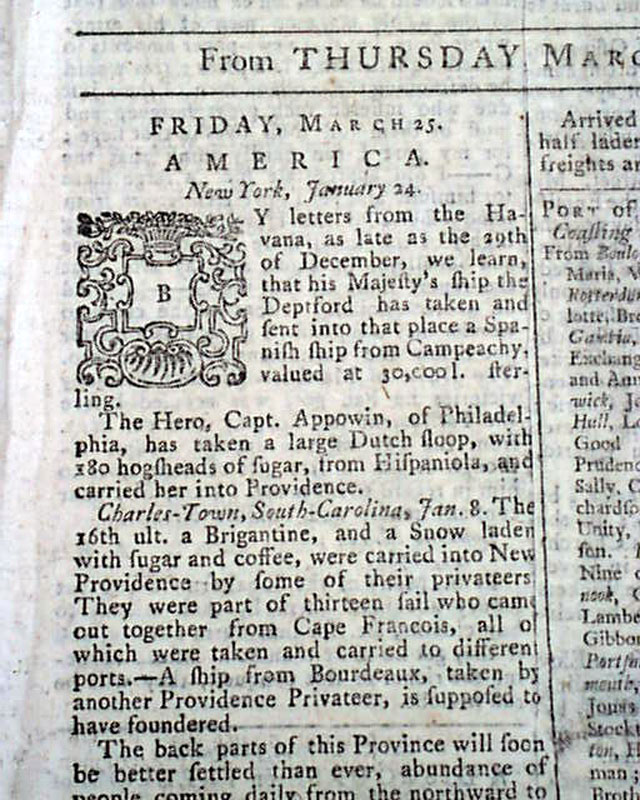Home > Back to Search Results >
People are charmed with the interior lands of South Carolina...
People are charmed with the interior lands of South Carolina...
Item # 693376
March 26, 1763
THE LONDON CHRONICLE, England, March 26, 1763 The front page has over half a column headed: "America" with datelines from New York, Charleston, and Boston. The Charleston account includes; "...The back part of this Province [South Carolina] will soon be better settled than ever, abundance of people coming daily from the northward to view the lands; who, being charmed with their fertility, and finding the weather exceedingly more moderate than in the northern climate, intend to apply for grants for the same."
Page 6 begins with a report from Boston.
Eight pages, 8 1/4 by 21 inches, nice condition.
AI notes: During the 1760s, South Carolina experienced a wave of settlement and expansion that reshaped its social and economic landscape. Following the end of the French and Indian War in 1763, Britain encouraged settlement in the colony’s interior—known as the backcountry—to secure frontier areas and counter potential Native American and Spanish threats. Immigrants from Scotland, Ireland, Germany, and England moved inland, many traveling down the Great Wagon Road from Pennsylvania and Virginia. These settlers established small farms and communities, often in contrast to the wealthy, slaveholding plantation society of the coastal Lowcountry centered around Charleston. The colonial government promoted settlement by offering land grants, leading to rapid population growth and the creation of new districts. However, the backcountry’s lack of law enforcement and government presence sparked unrest, resulting in the Regulator Movement (1767–1769), in which settlers took justice into their own hands to combat crime and disorder. By the end of the decade, South Carolina was evolving from a coastal plantation colony into a more diverse frontier society, setting the stage for both social tensions and future revolutionary sentiment.
Category: The 1600's and 1700's















